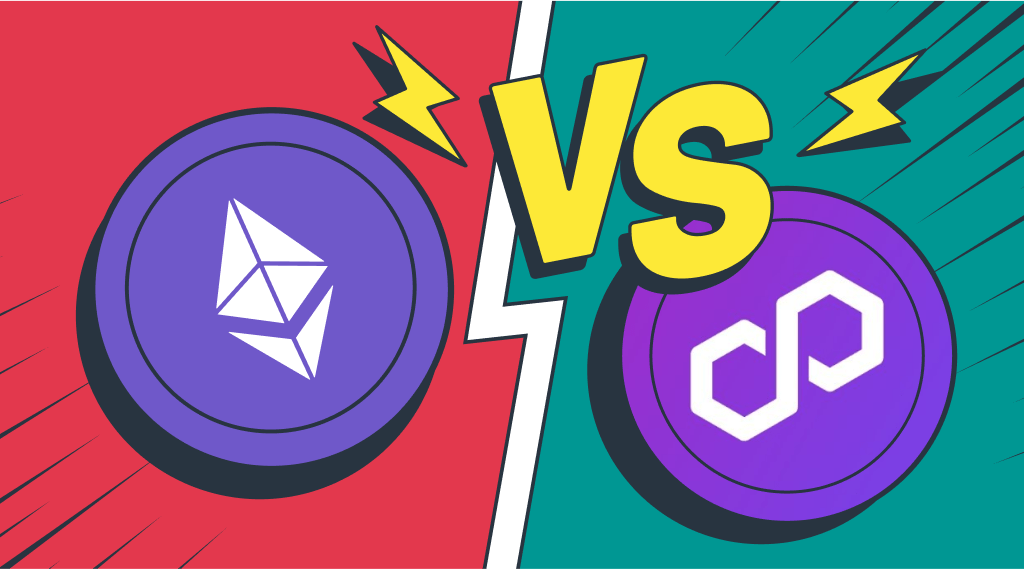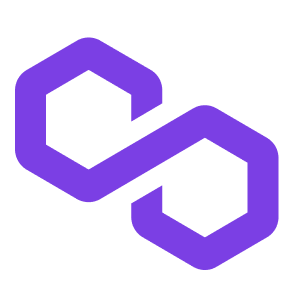Ethereum and Polygon are significant players in the blockchain and cryptocurrency sectors. While Ethereum has pioneered smart contract platforms, Polygon has emerged as a promising Layer 2 scaling solution. This article delves deep into their characteristics, differences, similarities, and how they fit into the broader blockchain ecosystem.

Ethereum, often called the “world computer,” is a decentralized platform that enables developers to build and deploy smart contracts and decentralized applications (DApps). Launched in 2015 by Vitalik Buterin and a team of other developers, Ethereum has been at the forefront of the blockchain revolution, introducing the concept of programmable transactions. Its native cryptocurrency, ETH, is used to power these applications and acts as a form of “gas” for transactions on the network.

Polygon (POL) is a Layer 2 scaling solution for Ethereum. It aims to provide faster and cheaper transactions on the Ethereum mainchain by building a multi-chain system. With Polygon, developers can create sovereign blockchains with customizable environments while still leveraging the security and ecosystem of Ethereum. POL, the native token of Polygon, is used for transaction fees and staking within the network.
Layer 2 solutions, like Polygon, are essentially blockchain protocols built on top of existing blockchains (in this case, Ethereum) to improve their scalability and efficiency. They handle transactions off the main chain, reducing congestion and lowering fees. Once the off-chain transactions are complete, they are batched together and added to the main chain. This approach allows for a significant increase in transaction throughput without compromising the security of the main chain.
Choose StealthEX for Exchange and Buy Crypto
Earn from Each Exchange by Joining StealthEX Affiliate Program.
Become a partner right now and use affiliate tools:
| Feature | Ethereum | Polygon (POL) |
| Foundation | Layer 1 | Layer 2 |
| Primary Purpose | DApps & Smart Contracts | Scalability Solution |
| Transaction Speed | Slower | Faster |
| Transaction Cost | Higher | Lower |
| Security | PoS | PoS + Ethereum’s Security |
| Flexibility | Limited | High (Custom Blockchains) |
Whether Ethereum or Polygon is “better” depends on the context and specific use case. Both projects have their strengths and are designed to address different challenges within the blockchain ecosystem. Here’s a breakdown to help you understand:
It’s also worth noting that many projects use Ethereum and Polygon in tandem to leverage the strengths of both platforms. Instead of viewing them as competitors, they can be seen as complementary solutions within the broader Ethereum ecosystem.
Ethereum and Polygon, while interconnected, serve distinct roles in the blockchain ecosystem. Ethereum’s pioneering platform for smart contracts has paved the way for decentralized applications, but its scalability issues gave rise to solutions like Polygon. Polygon, with its Layer 2 scaling mechanism, offers a promising avenue for applications to operate faster and cost-effectively. As the blockchain space continues to evolve, the synergy between Ethereum and Polygon will undoubtedly play a pivotal role in shaping the future of decentralized applications and platforms.
Ethereum’s primary function is to serve as a decentralized platform that enables the creation and execution of smart contracts and decentralized applications (DApps).
Ethereum is a foundational Layer 1 blockchain platform for creating decentralized applications and smart contracts. Polygon, on the other hand, is a Layer 2 scaling solution designed to improve Ethereum’s transaction speeds and reduce fees.
Polygon is a Layer 2 scaling solution that processes transactions off the main Ethereum chain, reducing congestion and fees. Once these off-chain transactions are finalized, they are batched together and added to the Ethereum main chain.
Yes, DApps built on Ethereum can easily migrate to Polygon due to their compatibility. This allows developers to leverage Polygon’s scalability while still benefiting from Ethereum’s robust ecosystem.
POL, the native token of Polygon, is used for transaction fees within the network. It’s also used for staking, where validators are incentivized to secure the network.
While Ethereum 2.0 aims to address many of the current scalability and sustainability issues, Layer 2 solutions like Polygon will still play a crucial role. They offer immediate scalability benefits and can work in tandem with Ethereum 2.0 to provide an even more efficient ecosystem.
Polygon benefits from the security of the Ethereum main chain while also having its own set of validators for its PoS chain. This dual-layer of security ensures that the network remains resilient against potential threats.
The future looks promising for collaborations between Ethereum and Polygon. As the blockchain space evolves, the synergy between the two platforms will likely lead to innovative solutions, enhancing the overall user experience in the decentralized world.
While both POL and ETH are native tokens of their respective networks and are used to pay for transaction fees, POL is specifically for the Polygon network, and ETH is for the Ethereum network. Additionally, POL is also used for staking on the Polygon network.
No, Ethereum and Polygon are not direct competitors. Instead, Polygon acts as a complementary solution to Ethereum, enhancing its scalability and efficiency. Many projects use both platforms in tandem to leverage their combined strengths.
Yes, assets can be bridged between Ethereum and Polygon using specific cross-chain bridge protocols, allowing for seamless transfers between the two networks.
Follow us on Medium, X, Telegram, YouTube, and Publish0x to stay updated about the latest news on StealthEX.io and the rest of the crypto world.
This article is not supposed to provide financial advice. Digital assets are risky. Be sure to do your own research and consult your financial advisor before investing.
ETH Ethereum Matic Polygon Polygon MATIC